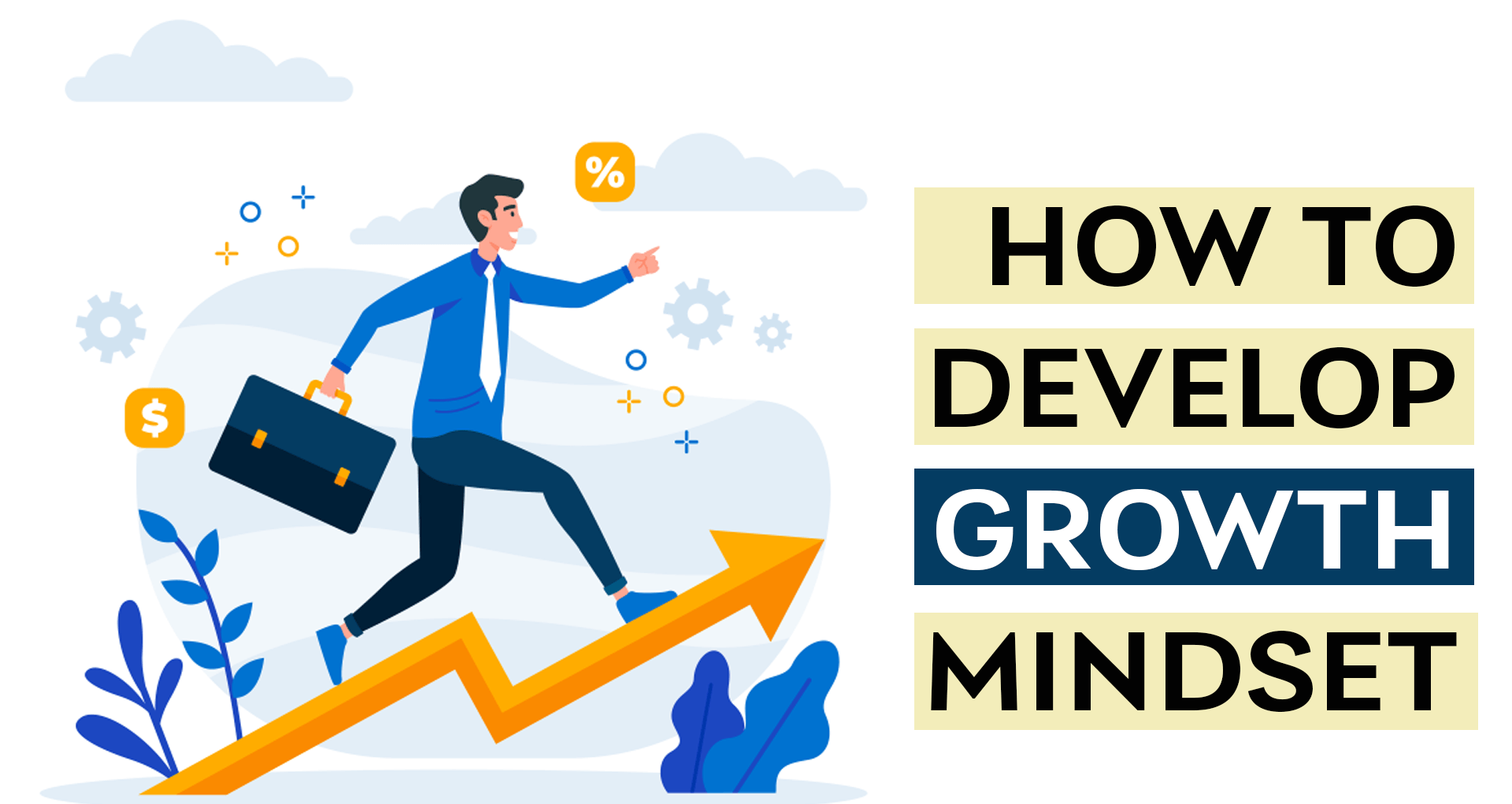Have you ever looked at someone’s success and thought, “They’re just naturally talented”? While talent plays a role, most successful people share something even more powerful: a growth mindset. This way of thinking is what separates those who thrive from those who stay stuck.
In this guide, we’ll explore how to develop a growth mindset (and why it matters more than you might think). Whether you’re trying to level up in your career, build confidence, or simply become a better version of yourself, this shift in mindset can be a game changer.
What Is a Growth Mindset?
The term growth mindset was introduced by psychologist Dr. Carol Dweck. It’s the belief that your abilities and intelligence can be developed with effort, learning, and persistence.
In contrast, a fixed mindset believes that qualities like intelligence or talent are static—you either have them or you don’t. People with fixed mindsets often avoid challenges, fear failure, and give up easily.
But with a growth mindset, failure isn’t the end. It’s simply feedback—a chance to improve.
Why a Growth Mindset Matters
Adopting a growth mindset affects nearly every area of your life. Here’s why it’s so important:
1. Boosts Resilience
When you see setbacks as opportunities to learn, you’re less likely to give up when things get tough. You become more adaptable and emotionally resilient.
2. Enhances Learning
A growth mindset encourages curiosity. You’ll be more open to learning new things, even if they’re outside your comfort zone.
3. Improves Performance
Studies show that students and professionals with a growth mindset perform better over time. Why? Because they believe effort leads to improvement.
4. Strengthens Relationships
Believing that people can grow allows for more compassion, patience, and better conflict resolution—key ingredients in any relationship.
Growth Mindset vs. Fixed Mindset
| Situation | Fixed Mindset Reaction | Growth Mindset Reaction |
|---|---|---|
| Facing a challenge | “I can’t do this.” | “I can’t do this yet, but I’ll learn.” |
| Receiving feedback | “They’re just criticizing me.” | “This feedback can help me grow.” |
| Seeing others succeed | “They’re just lucky or naturally gifted.” | “I can learn from their journey.” |
| Making a mistake | “I failed—I’m not good at this.” | “What can I learn from this mistake?” |
How to Develop a Growth Mindset: Step-by-Step
1. Become Aware of Your Current Mindset
You can’t change what you don’t acknowledge. Pay attention to your inner voice. Are you talking yourself out of challenges or labeling yourself as “not good enough”? Recognizing these thoughts is the first step.
2. Replace “I Can’t” with “I Can Learn”
Start catching yourself when you say things like “I’m not good at this.” Replace it with “I’m not good at this yet.” That small shift can rewire your brain to focus on progress over perfection.
3. Embrace Challenges
Don’t avoid things that are hard. In fact, seek them out! Every challenge is a growth opportunity in disguise. Whether it’s learning a new skill or having a tough conversation, leaning into discomfort is key.
4. See Failure as Feedback
Failure doesn’t mean you’re not good enough. It means you’re trying. Look at what went wrong, analyze what you can do better, and try again. Most successful people fail multiple times before they win.
5. Celebrate Effort, Not Just Results
If you only focus on outcomes, you’ll feel discouraged when results don’t come fast. Instead, reward the effort—did you show up? Try something new? Push through fear? That’s worth celebrating.
6. Surround Yourself with Growth-Minded People
The people you spend time with influence your mindset. Connect with those who inspire growth, challenge your thinking, and encourage your development.
7. Practice Self-Compassion
Growth doesn’t happen overnight. There will be slip-ups. Be kind to yourself and remember—progress over perfection.
Real-Life Examples of Growth Mindset in Action
📌 Example 1: Learning a New Skill
Meet Sarah, a graphic designer who wanted to learn coding. She struggled at first, failed a few online challenges, and almost gave up. But instead of quitting, she shifted her focus to learning, not getting it right the first time. Fast-forward 6 months—she built her own portfolio website from scratch.
📌 Example 2: Career Setback
James was laid off during a company restructure. Instead of seeing it as a dead end, he saw it as a redirection. He used the time to upgrade his skills, networked like crazy, and landed a better job within three months.
Growth Mindset Affirmations to Start Using Today
Try repeating these daily:
- “I am capable of learning anything I set my mind to.”
- “Every challenge is an opportunity to grow.”
- “Mistakes help me become stronger.”
- “I believe in progress, not perfection.”
- “I’m not there yet, but I’m closer every day.”
Recommended Resources to Keep Growing
-
Books:
- Mindset: The New Psychology of Success by Carol Dweck
- Grit by Angela Duckworth
- The Power of Yet by Esther P Cordova
-
Podcasts:
- The Mindset Mentor
- The Daily Stoic
- School of Greatness with Lewis Howes
-
Apps:
- GrowthDay, Notion, Headway, or simply Google Calendar to track daily habits.
Conclusion
Your mindset is like the lens through which you view the world. With a fixed mindset, life feels limited and intimidating. But with a growth mindset, life becomes full of opportunities, possibilities, and transformation.
Change won’t happen overnight, but it will happen if you stay consistent, stay curious, and believe in your ability to grow.
So ask yourself—what’s one thing you can do today to shift your mindset? Start small, stay committed, and watch how your world begins to expand.




